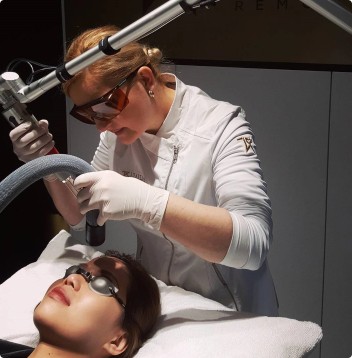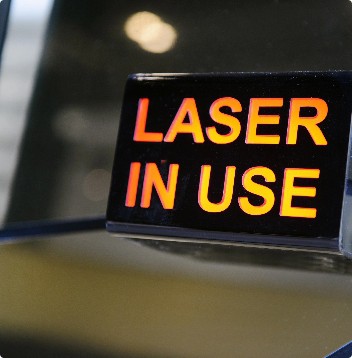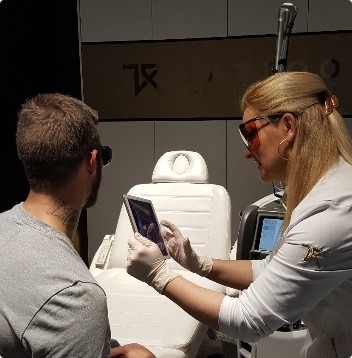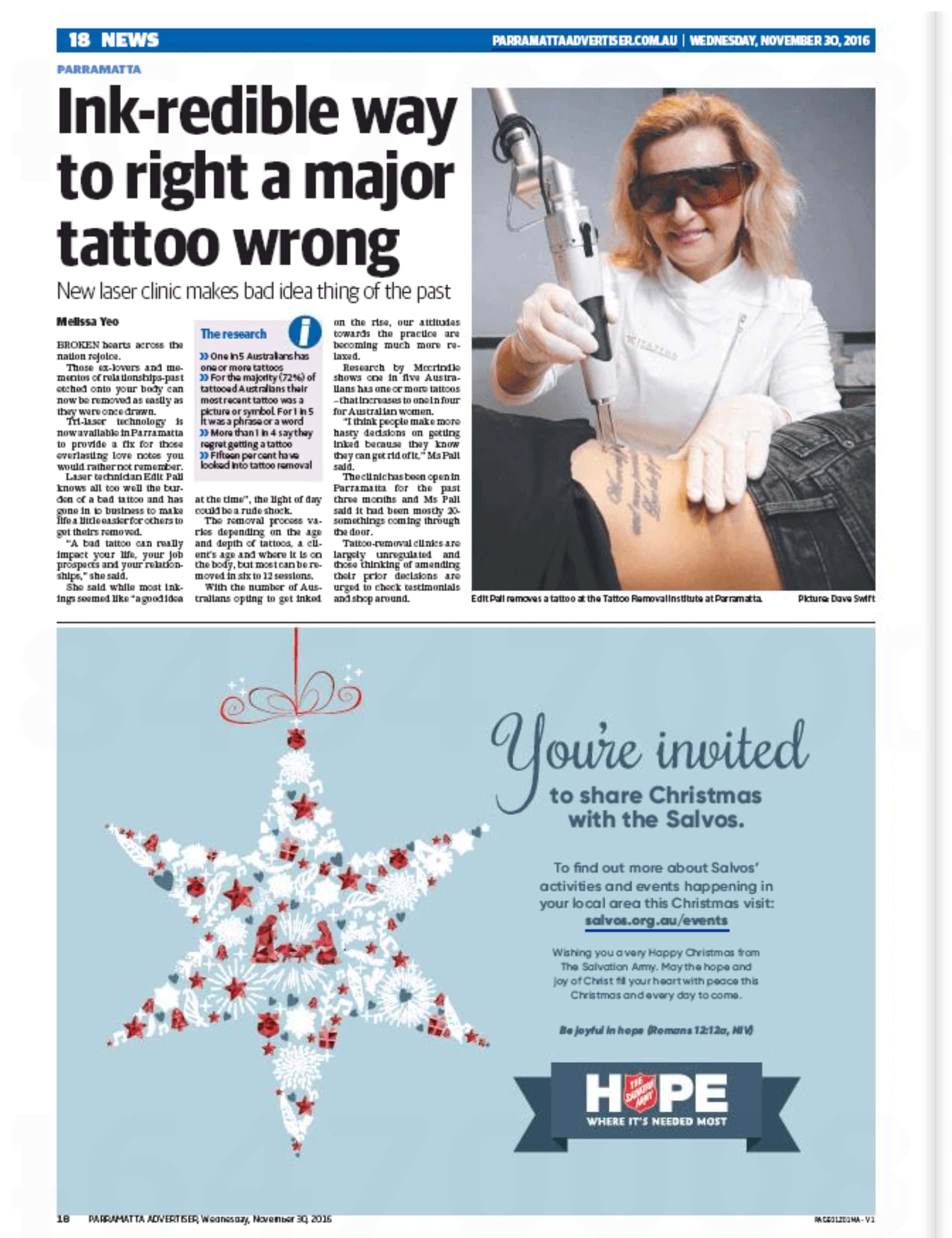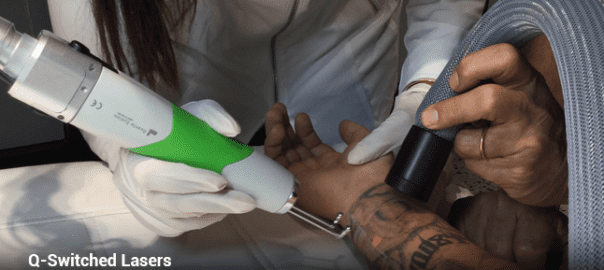
One in seven Australians has a tattoo and more than a third regret getting inked, according to the National Health and Medical Research Council.
LIKE many of the one in seven Australians who have a tattoo, Cameron* regrets getting inked.
At 18, he got the words “Live Free” tattooed across his knuckles. Now at 27, he wants to get rid of it.
More than a third of Australians regret getting inked and one in seven of this group are considering removal, according to a 2012 study from the National Health and Medical Research Council.
There are hundreds of laser clinics around the country offering tattoo laser removal services, but each use different types and strengths of lasers, with varying results.
.

Cameron, from Brisbane, looked online to find a laser tattoo removal clinic in his local area, and booked in a consultation with a major chain.
“I assumed they were legit and they told me I would need to do 10-12 treatments to have them fully removed,” Cameron told news.com.au. Before beginning treatment, he signed a legal agreement waiving the clinic of any liability should he suffer a reaction.
“I had between 15 and 20 sessions, even though they said it would only take 10-12, and they cost $170 each. I started asking questions in the last three or four sessions,” he said.
“I said ‘This has cost me a lot of money, why am I not getting the results?’ So she turned the laser machine right up, as high as it goes, and she said ‘This is the highest setting it can possibly go to’, and she cooked my hand.”

Cameron says 10 minutes after the appointment was over, his hands started to blister. He works as a tree logger and was unable to work for months after his final laser removal session.
“I ended up with third degree burns on my hand and because I work outside — I carry logs and cut trees — the sun would burn my hand,” he said.
“Any time I bumped my hand, it would bleed. It was so painful I was reduced to tears.Eventually I got to the stage where I couldn’t afford to take any more time off work, so when I clenched my fist, my hands would crack and just start bleeding. So I had blood running down my arms all day everyday. It was excruciating.
“Now, if I bump them too hard, I get blood blisters. If I spend too much time in the sun they peel and I get blood blisters. They’re very sensitive.
“I’ve spent thousands of dollars there for it to be worst than it was in the first place and now I just have scar tissue.”
Cameron has tried to contact the clinic, but says the legal waiver he signed makes it close to impossible for anything to be done.
“When they first took my complaint they reminded me that I signed a waiver,” he said. “But regardless of any waiver you sign, they still have a duty of care. They knowingly turned this laser machine up to where it was going to cook me. You have a duty of care to act in your patient’s best interests.”
He now has 3mm recess holes in each finger, where his tattoos used to be, and his burns are treated weekly with a cream that encourages the regeneration of cells.
“It looks like a big chunk has been taken out of my hand,” he said. “The cream that my doctor has is what they use to transport organs for organ donation. It was only once she started doing that that it started to heal.”

There are two ways to remove tattoos using lasers. The first uses heat to break up the ink particles, the second uses sound waves.
There are two types of heat laser machines: Q-switched machines, which are the industry standard and cost around $150,000, and intense pulse light (IPL) lasers which cost between $10,000 and $15,000. IPL laser machines are often marketed as all purpose machines, but are not suitable for removing tattoos.
If not applied correctly, the heat from the laser can damage the skin, causing a burn that can lead to more significant scarring that the original tattoo, says Australian Society of Plastic Surgeons spokesman Jeremy Hunt.
“The only solution is then to surgically remove it. It can involve a skin graft and this can lead to significant scarring,” Dr Hunt told news.com.au.
PicoWay machines use sound waves to scatter the ink and are generally regarded as the better way to remove tattoos.
Regulation of the laser treatment industry varies around the country — only Queensland, Tasmania and Western Australia have some rules in place. In NSW and Victoria anyone can buy a cheap laser machine online, do a weekend crash course and call themselves an “accredited” laser technician.
A Queensland Health spokesman told news.com.au the department has received a number of complaints about clinics offering laser hair removal or laser tattoo removal services.
“Allegations include people operating without a licence and clients suffering burns or infections,” he said.
“Since July 1, 2016, businesses undertaking tattoo-removal procedures involving skin penetration are required to have higher risk personal appearance service licence, and meet strict infection control standards.
“Incorrect use or poor training in the use of lasers may lead to severe skin burns and scarring or, if care is not taken following the procedure, infection.”
Last year Queensland Fair Trading received 13 complaints regarding laser hair removal, slighting down from 15 complaints in 2015, but none about laser tattoo removal.
Cameron has a message for anyone considering getting their tattoos removed.
“Don’t trust someone unless they only specialise in tattoo removal. There’s a lot of really good tattoo removal places out there,” he said.
“It’s an extremely painful process and mine got made even more painful. These places that do hair removal, they haven’t been properly trained to do tattoos as well. People think getting a tattoo hurts … wait until you get a tattoo removed.”

